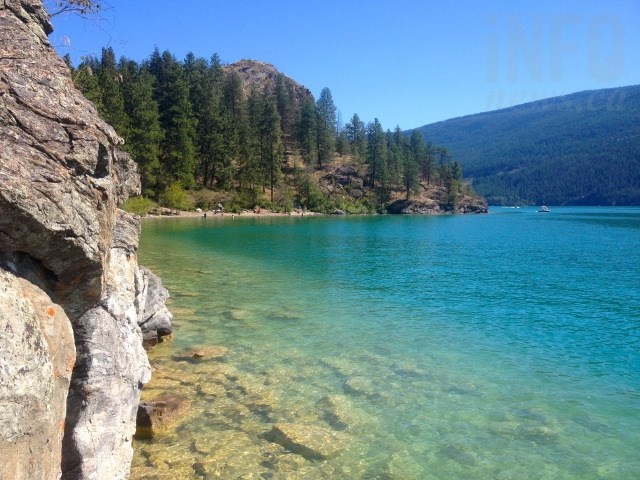
FILE PHOTO
(CHARLOTTE HELSTON - REPORTER / iNFOnews.ca)
October 30, 2020 - 7:30 AM
Over the last roughly 20 years, the Regional District of the North Okanagan has never seen algae levels this high in Kalamalka Lake.
It's so high the regional district had to switch the 41,000 Kalamalka Lake water intake customers to a separate water supply last week as a precaution.
The district has been monitoring algae levels in the water since the late 1990s and this is the highest number of algae of this type that the district has seen before. The district noted that the algae doesn’t currently pose a health risk.
READ MORE: Algae bloom prompts water source change for North Okanagan residents
“Algae blooms typically happen at the end of summer and beginning of fall, but the levels now are ten times higher than the typical levels we see. Many factors can lead to algae blooms, and in this case, there are two main causes that we believe led to the high numbers,” said communications officer Ashley Gregerson with the regional district, in an emailed statement.
One possible cause of the bloom is that the lake took longer to turn turquoise this year and the colours were not as vibrant. Kalamalka Lake is what’s called a ‘marl’ lake and contains limestone deposits left behind by receding glaciers.
When the water warms up in the summer, the dissolved limestone crystallizes and turns blue-green.
“This has an important function for the lake's health as it helps naturally keep algae levels low,” Gregerson said.
READ MORE: The summertime phenomenon that gives Kalamalka Lake its many colours
Another likely factor was the flooding in 2017.
"When high water events occur, water picks up excess nutrients on the land. The nutrients phosphorous and nitrogen promote algae growth. Major flooding events are natural ecosystem disruptors that can change the typical functioning of a lake for years,” she said.
The regional district has been advocating for funding to add a filtration process to the Kalamalka Lake water treatment process for many years, she said, adding that filtration is effective in reducing and removing algae from treated drinking water.
To contact a reporter for this story, email Carli Berry or call 250-864-7494 or email the editor. You can also submit photos, videos or news tips to the newsroom and be entered to win a monthly prize draw.
We welcome your comments and opinions on our stories but play nice. We won't censor or delete comments unless they contain off-topic statements or links, unnecessary vulgarity, false facts, spam or obviously fake profiles. If you have any concerns about what you see in comments, email the editor in the link above.
News from © iNFOnews, 2020